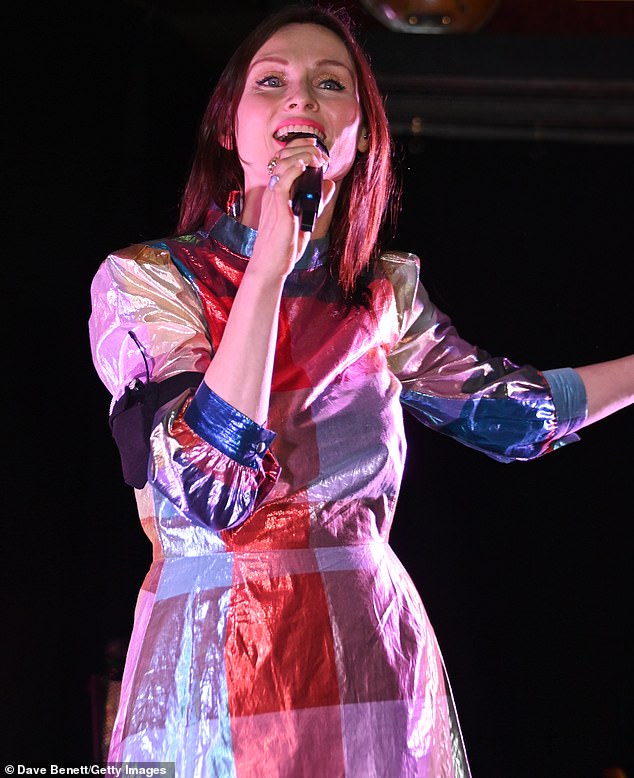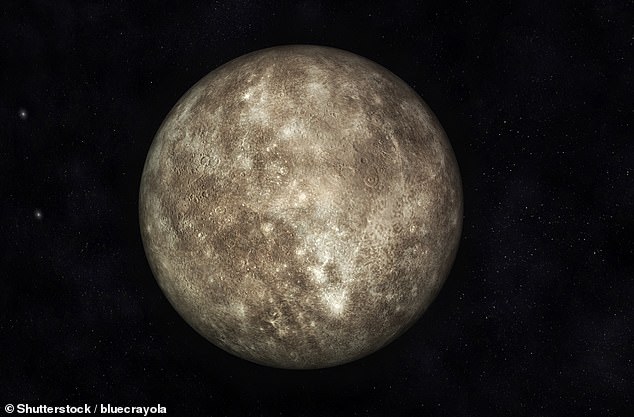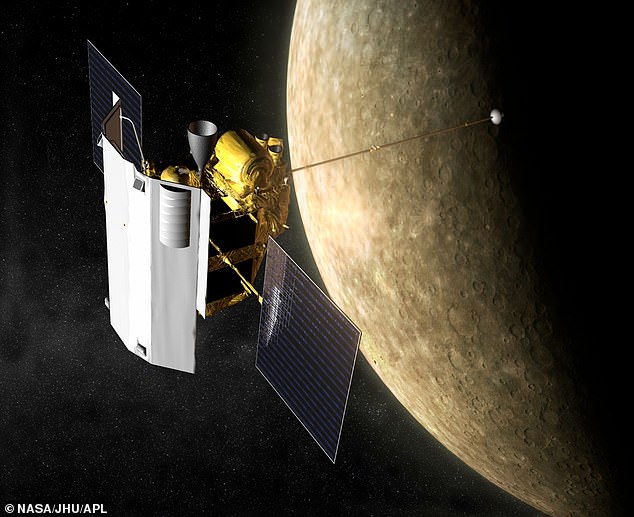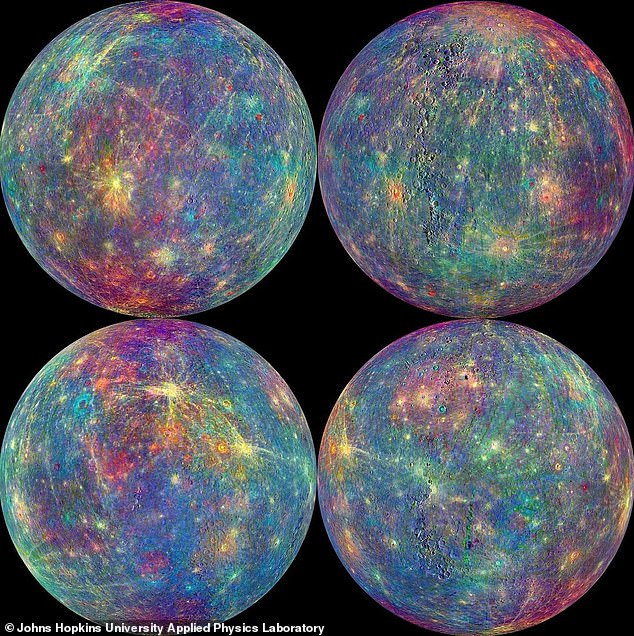It seems even NASA astronomers are fans of ‘Saltburn.’
The space agency has released a stunning photo of Mercury featuring lyrics from Sophie Ellis-Bextor’s hit ‘Murder on the Dancefloor’.
The 2000 song has gained popularity thanks to its use in the final scene of the controversial new film starring Barry Keoghan.
NASA said: ‘It’s Mercury on the dance floor, but you better not kill the beat!’
In the snapshot, the planet is seen from four angles and lights up in multiple colors like a reflective disco ball, including pink, purple, turquoise, yellow and peach.
The mosaic was taken by NASA’s Messenger space probe, which spent four years orbiting the planet.

NASA posted the photo on social media with the caption “You better not kill the beat,” a lyric from Sophie Ellis-Bextor’s hit “Murder on the Dancefloor.”
Responding to NASA’s post, the British singer said: “I’m very proud to have my song referenced alongside such a beautiful planet.”
‘Mercury in Retrograde Disc!’
NASA responded simply by saying, “When our worlds collide!”
Mercury, the planet in our solar system closest to the sun, is rocky and full of craters.
When visible from Earth (about four times a year, shortly after sunset or before sunrise), it appears as a whitish dot.
If humans could get close enough to the planet, it would appear dark gray, due to the thick layer of dust on its surface.
But in this NASA image, taken by NASA’s Messenger space probe about a decade ago, Mercury appears multicolored.
This is because it is an approximation of the different wavelengths of light coming from the planet that the human eye cannot see.

Responding to NASA’s post, Sophie Ellis-Bextor (pictured) said: “I’m so proud to have my song referenced alongside such a beautiful planet.” Mercury in Retrograde Disc!

Mercury is one of the two “lower planets.” The inferior planets are those that orbit closer to the sun than Earth (the other being Venus). In the photo, digital illustration of Mercury.
Messenger used its MASCS instrument, which was designed to detect minerals on Mercury’s surface.
“MASCS collects hundreds of different wavelengths of light, from ultraviolet to near-infrared, to study Mercury’s mineralogy,” NASA says.
‘These spectra are visualized by mapping different wavelengths or combinations of wavelengths into red, green and blue, so that the human eye can distinguish them.
‘The multicolored ‘fireworks’ are the result of a combination of physical and chemical differences at the surface, including mineralogical diversity and the age of exposure of the craters.’
After launching in 2004 and entering Mercutry’s orbit in 2011, Messenger ended its mission in 2015 by flying toward the planet’s surface.
Slightly larger than Earth’s Moon, Mercury is the smallest planet in the solar system and is the closest to the Sun, at an average distance of 58 million kilometers (36 million miles).
While Mercury may be the smallest planet, it is also the fastest, traveling in its orbit at nearly 29 miles (47 km) per second, making a year on Mercury only last 88 Earth days.

The colorful NASA image was taken by NASA’s Messenger space probe, which ended its mission in 2015.
Mercury has so many bumps on the surface because numerous space rocks have slammed into it at high speeds for billions of years.
Although it is the closest planet to the sun, Mercury is not the hottest planet in the solar system.
The second planet, Venus, is hotter, with a soaring average surface temperature of 465°C (870°F), largely due to its dense atmosphere.
Mercury’s temperature, by comparison, averages 333°F (167°C).
Venus, also rocky, is not only inhospitable but also sterile, with a surface hot enough to melt lead and toxic clouds of sulfuric acid.


